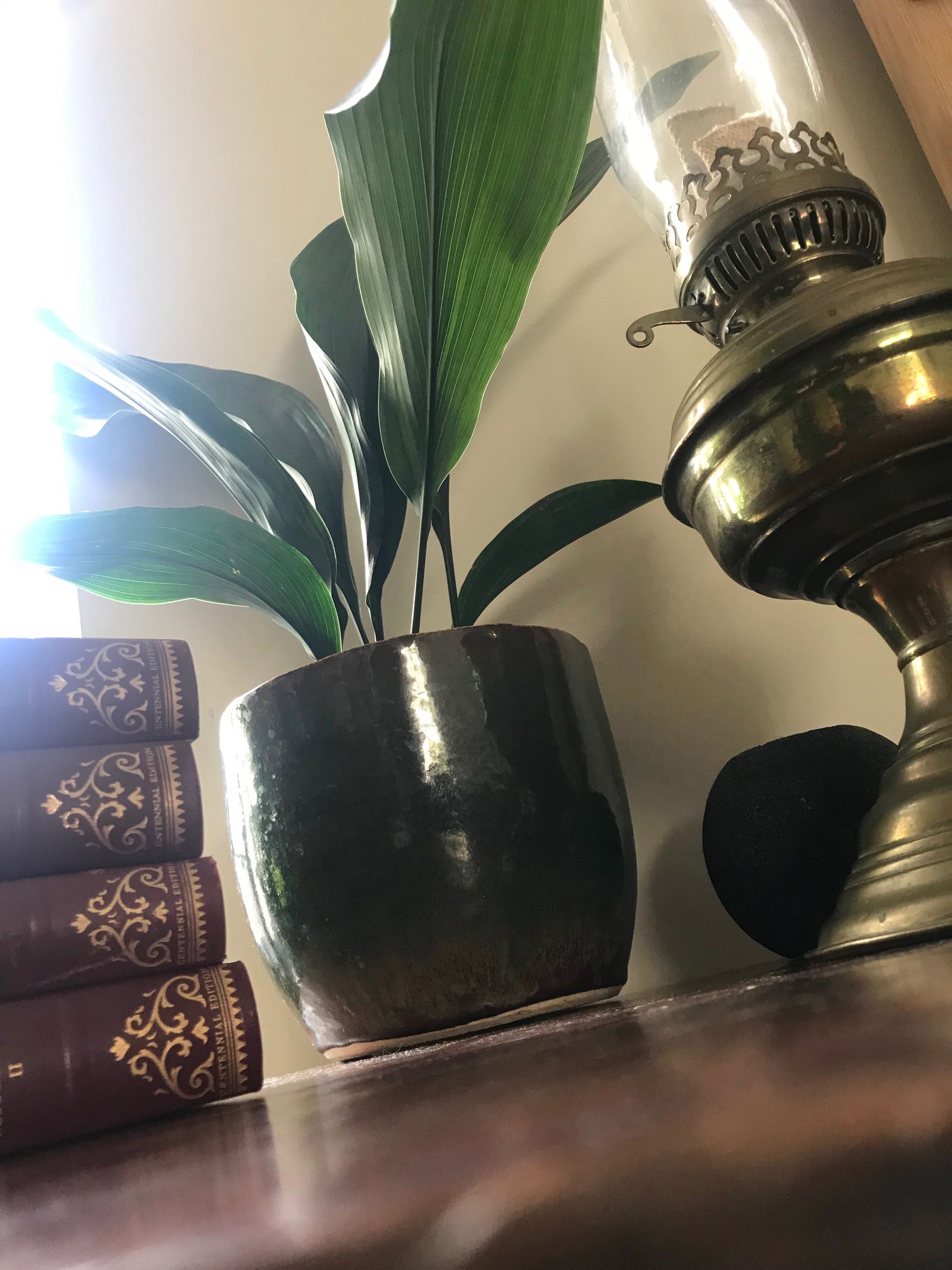
Aspidistra elatior
Contents
- Top Tips
- Location, Water, Humidity & Fertilisation
- Common Issues
- Origins, Temperature, Propagation, Repotting (includes addressing Root Rot) & Toxicity.
Need the answer to a specific plant query? Book a 1-to-1 video call with THE HOUSEPLANT DOCTOR™, the website's friendly author, to overcome and address your niggling problem! Available on iMessage, WhatsApp, Facebook Messenger & more.
Top Tips & Info
- Care Difficulty - Easy
- Aspidistra can withstand all levels of indirect light; however, avoid prolonged exposure to the sun, especially in the height of summer due to the risk of sun-scorch and bleached leaves.
- Less is more when watering Aspidistra (Cast Iron Plant). Only rehydrate once the soil's top half becomes dry to avoid root rot.
- Fertilise using a 'Houseplant' labelled feed every four waters, all year round.
- Repot every three years with 'Houseplant' compost in the spring or summer months. Water the plant 24hrs beforehand, to reduce the risk of damaging the root hairs (transplant shock). This is a perfect time to divide the rhizomes (horizontal stems) that lay beneath the soil line.
- Keep an eye out for Fungus Gnats that'll lay their eggs 2cm (1 inch) in any soil that remains too damp in-between waters. This is a prominent issue among specimens located in dark environments.
- Scroll down to 'Flowers' to see more about their fascinating blooms!
Location & Light - 🔸🔸
Aspidistra can withstand all ranges of indirect light, meaning that most locations in a home will be accepted. Avoid situating it in a spot that receives intense sunlight for more than an hour, as it'll quickly lead to sun-scorch and permanently damaged leaves. Clean the leaves regularly, especially with those in darker environments with lukewarm water and a damp cloth. Although this isn't too much of an issue, a build-up of dust particles can clog up the plant's pores, causing lowered light capturing-efficiency.
Water - 🔸
Due to the Aspidistra's amazing ability to withstand dry soil due to competition from nearby trees in the wild, this species is best kept on the under-watered. We'd recommend allowing the soil's top half to dry out in between waters, reducing this slightly further in the autumn and winter. If your plant is situated in a darker environment, allow almost all of the compost to dry out to minimise the chance of root rot and hatching Fungus Gnat larvae. Remember, if in doubt, don't water it - they can deal with short-lived droughts! Under-watering symptoms include stunted growth, browned leaf edges and yellowing leaves; these issues are commonly caused by too much sunlight or heat, or pure forgetfulness. Over-watering symptoms include a collapsed base, yellowing leaves, heavy soil and plant death. If you feel that over-watering is to blame for a gradual decline in health, be sure to click on this link for more info about addressing root rot.
Humidity - 🔸
Although average room humidity is acceptable for this species, those grown in a dry climate (below 40%) should be sat on a humidity tray to prevent the risk of browning leaf-tips. At monthly intervals, perform a gentle hose-down to hydrate its leaves and reduce the number of dust particles resting on its foliage.
Fertilisation - 🔸🔸
Fertile soil is vital for a healthy Aspidistra; feed its soil once every four waters using a 'Houseplant' labelled fertiliser, before reducing this every sixth drink in the autumn and winter. Try not to over-feed as their roots are susceptible to burning, especially when over-applied in dry soil.
The specimen above is an Aspidistra elatior 'Variegata', sent in to us from Melanie Elliott who has grown the original cutting since 1978!
Common Issues with Aspidistra
Older leaves that rapidly become yellow are a clear sign of over-watering, usually accompanied by low light, mouldy soil and Fungus Gnat flies. Although this species can do well in darker locations, the frequency of irrigations must be reduced to counteract the chance of root rot. People don't realise that a plant's root system needs access to oxygen too; when soil is watered, the air will travel upwards and out of the potting mix. A lack of accessible oxygen will cause them to subsequently breakdown over the oncoming days. Scroll down to 'Repotting' to learn more about addressing root rot.
Other symptoms of root rot are a 'loose' plant that isn't fixed into the soil, yellowing leaves, no new growth and gradual decline. The soil may also smell 'earthy'. More information on root rot is in the 'Repotting' section at the article's bottom.
Although Aspidistra aren't too fussy with air moisture, too low humidity may cause browning/crispy leaf tips. Although this won't kill the plant, increase humidity to prevent new growth in adopting these symptoms. Either mist weekly while the heaters are on, or create your humidity tray to provide a a more stable environment for your specimen.
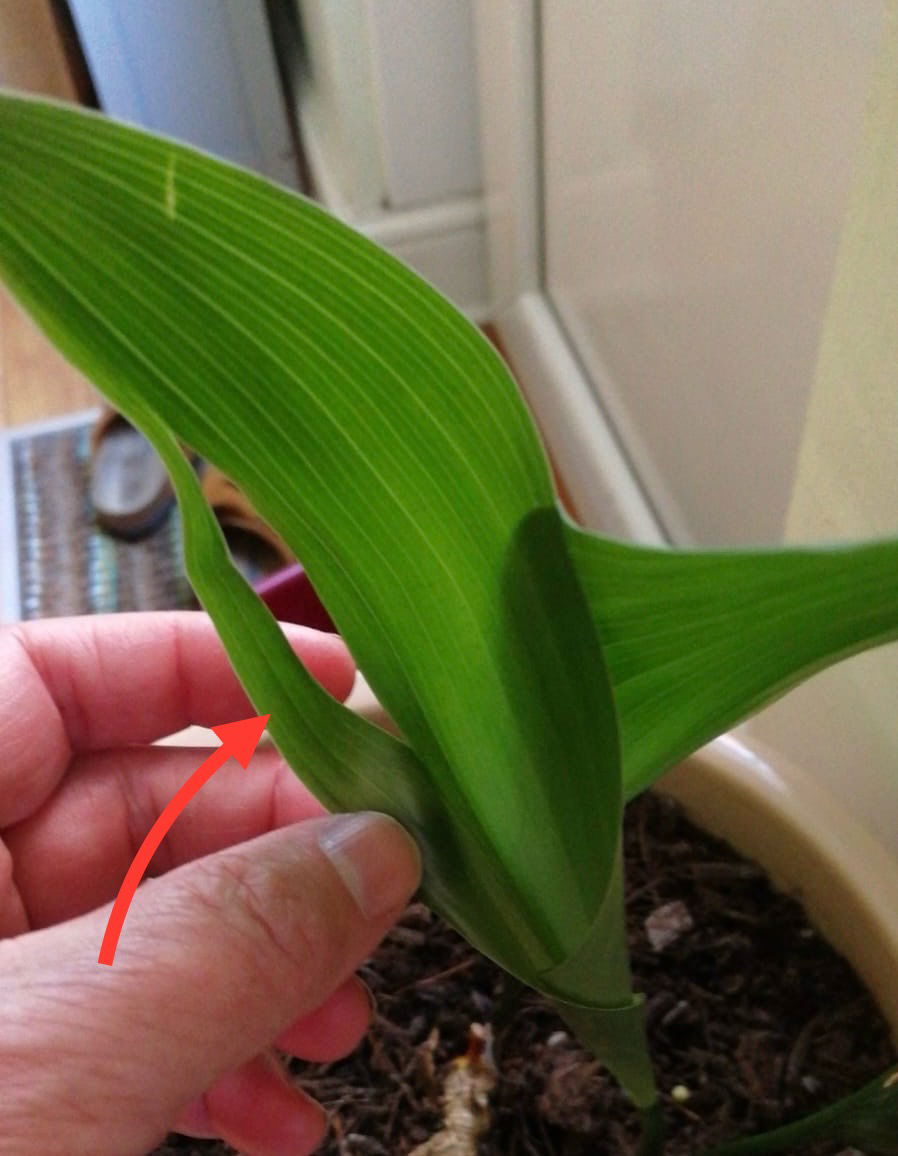 Damage during the leaf's juvenile stage is usually what causes it to split, but won't pose any risk to the plant's heath. Keep the leaf attached unless it beings to yellow over.
Damage during the leaf's juvenile stage is usually what causes it to split, but won't pose any risk to the plant's heath. Keep the leaf attached unless it beings to yellow over.
Persistent droughts will result in crispy brown sections across its foliage. Allow the affected leaf to thoroughly brown over before removing it with a clean pair of scissors, as puncturing the soft tissue may cause bacterial diseases further down the line. Introduce a watering schedule or pebble tray to avoid the risk of dehydration in the future.
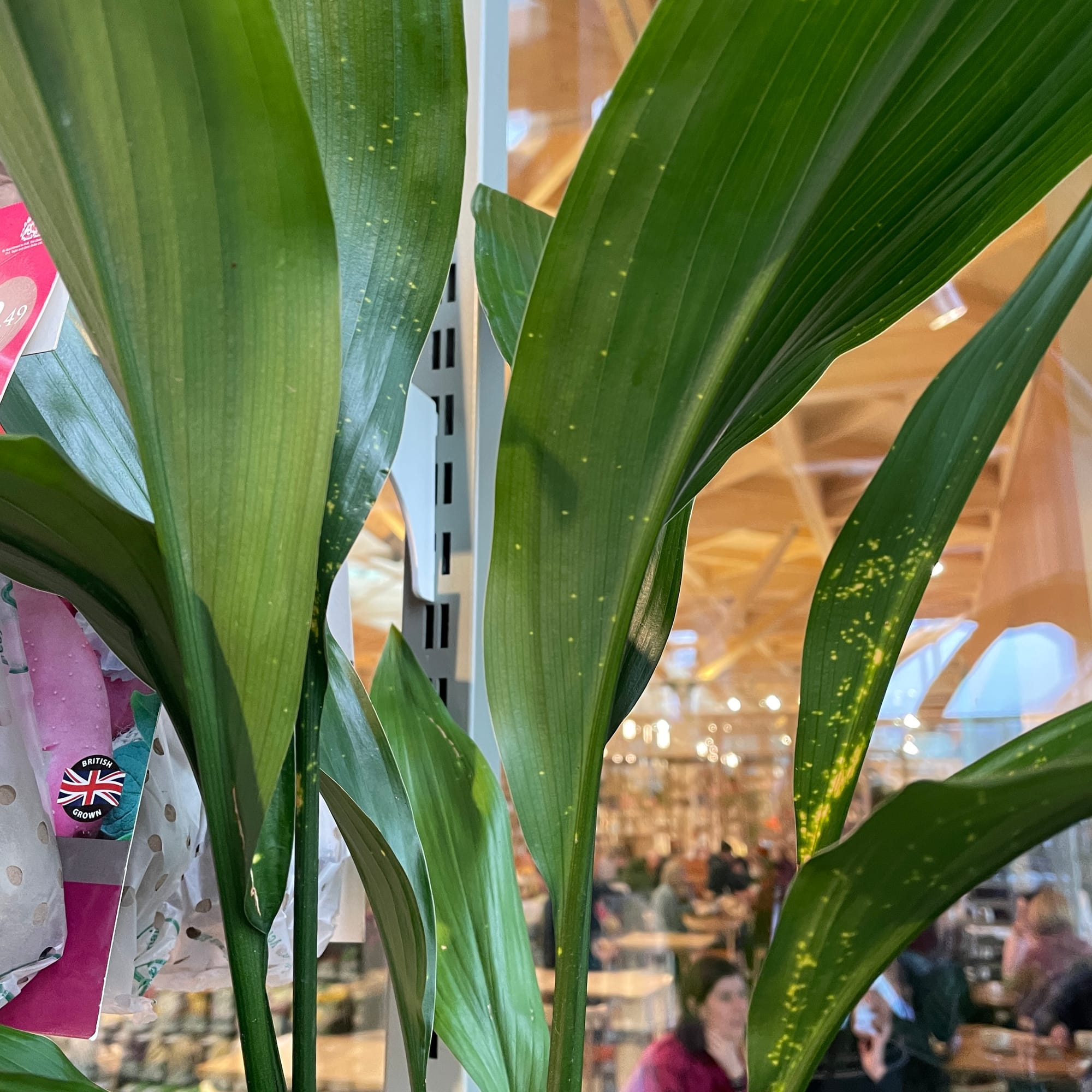
A loss of variegations is caused by too little light. Despite Aspidistra being an excellent choice for shady locations, it'll come at the cost of its variegations for multi-coloured specimens. Move the plant into a brighter area with minimal direct sunlight to allow the variegations to appear on the new growth. If you aren't entirely displeased about the loss, simply skip this step. Alternatively, extreme variegations that hinder the plant from developing chlorophyll (green pigmentation) is typically caused by too much sunlight.
Spider Mites are small, near-transparent critters, that'll slowly extract the chlorophyll from of its leaves. Have a check under the leaves, most notably along the midrib, for small webs and gritty yellow bumps. Click here to read our article about the eradicating Spider Mites, along with some extra tips that you may not find elsewhere!
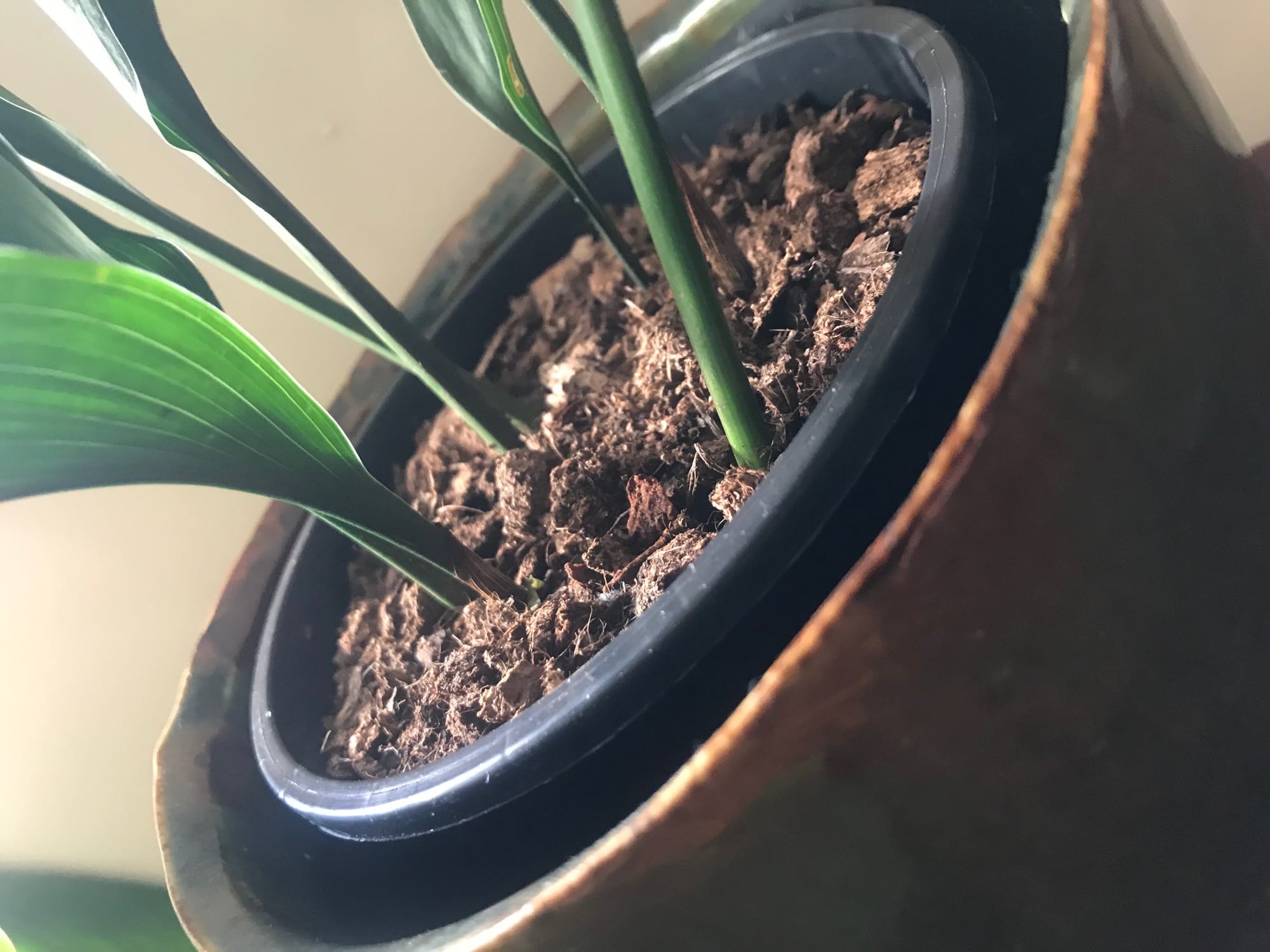 Aspidistra has a modified stem whereby rhizomes (much like the Rabbit Foot Fern or Blue Star Fern) that runs just beneath the soil line, harbouring both its petioles and roots.
Aspidistra has a modified stem whereby rhizomes (much like the Rabbit Foot Fern or Blue Star Fern) that runs just beneath the soil line, harbouring both its petioles and roots.
Origins
John Ker Gawler first described Aspidistra in 1822, using the Greek word for 'shield' (ασπίς) and the genus name of Tupistra, in reference to its foliar structure. Despite the initial taxonomy, it was largely ignored until the 1980s, when it was correctly placed from the Lilaceae family to Asparagaceae after morphological investigation.
During the age of gas-powered lighting in the Victorian period, toxic fumes and soot-covered surfaces were a frequent scene in homes, not only causing nausea and headaches, but also intoxicating plants until death. The only two species that survived this challenging era were Kentia Palms and the newly discovered Aspidistra, illustrating great wealth and fortune when featured on family portraits.
There are two species of Aspidistra that may be in our homes today - the currently commercialised Aspidistra elatior, along with the lesser-known historic A. sichuanensis that sports thinner leaves compared to the former.
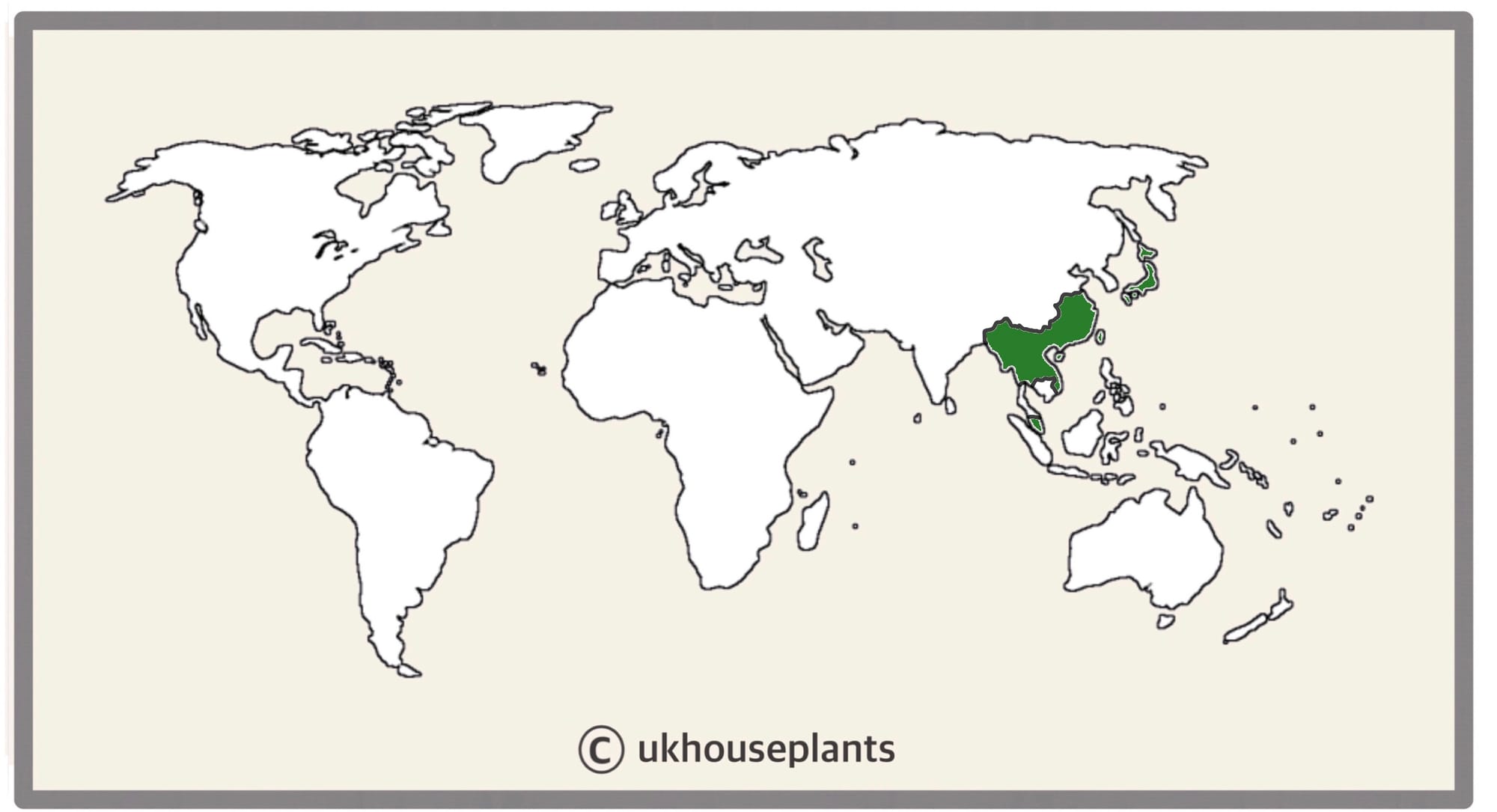 The Distribution of Aspidistra.
The Distribution of Aspidistra.
Temperature
10° - 26°C (50° - 80°F)
H1b (Hardiness Zone 12) - Can be grown outdoors during the summer in a sheltered location with temperatures above 10℃ (50℉), but is fine to remain indoors, too. If you decide to bring this plant outdoors, don't allow it to endure any direct sunlight as it may result in sun-scorch and dehydration. Regularly keep an eye out for pests, especially when re-introducing it back indoors.
Spread
Up to 0.6m in height and 1m in width, with the ultimate height taking between 3 - 8 years to achieve. Each rhizome can produce up to three new leaves per season in the right cultivation.
Pruning & Maintenance
Remove yellow or dying leaves, and plant debris to encourage better-growing conditions. While pruning, always use clean utensils or shears to reduce the chance of bacterial and fungal diseases. Never cut through yellowed tissue as this may cause further damage in the likes of diseases or bacterial infections. Remember to make clean incisions as too-damaged wounds may shock the plant, causing weakened growth and a decline in health.
Propagation
Via Seed & Rhizome Cuttings.
Rhizome Cuttings (Easy) - Choose the healthiest, most established rhizomes that show no signs of damage or disease. This method can be taken from spring to early summer, using between two to four fronds within each rhizomatous section. Cut directly below a node using a clean knife, and separate its root systems from the rest of the root ball. Make sure the propagated rhizome is at least 5cm (2 inches) in length so that it has enough stored energy to continue growing. Place the rhizome sideways along a bed of moist 'Houseplant' labelled compost. Sprinkle a half a centimetre of soil onto of the rhizome to lock in surrounding moisture and wait for new growth that may take up to several weeks. Avoid direct sunlight and offer high humidity with temperature (15°C, 59°C) for success. After its second new leaf, treat it like a normal specimen, following the care tips above!
Flowers
Matured specimens are perennial, with small purple rosette flowers emerging an inch above the soil line in spring or summer. Its blooming process has baffled botanists for many years due to its low-growing nature, a complete contrast to the preferred height of ordinary flowers to attract airborne pollinators. If pollination is successful, small red berries will form in the flower's urn, usually holding just one or two seeds. It's possible that a domestically grown specimen will bloom indoors, with those being recently repotted in the mid winter having the best chance. The flowers are primarily pollinated by flying insects, most notably Fungus Gnats.
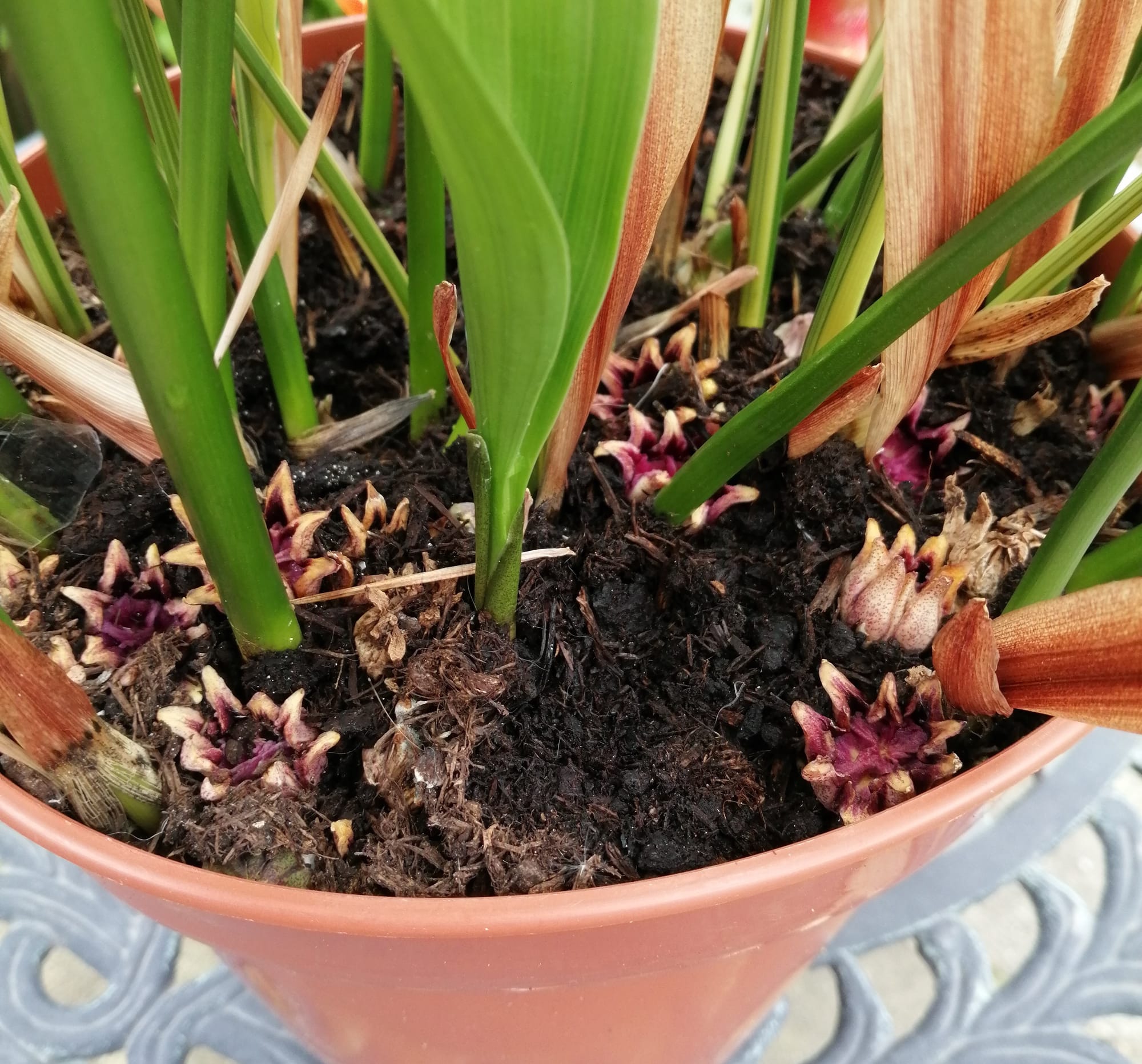 Credit: Melanie Elliott.
Credit: Melanie Elliott.
Variegated Cultivars (Just a few of them!)
'Lennon's Song' - The green-toned foliage is slashed with thin lime stripes across its leaves. Originally selected and grown by Florida-born Robin Lennon in California from his Aspidistra fields.
'Asahi' - A white-tipped variety with the typical Aspidistra green base, separated by a mottled infusion of the two colours.
'Okame' (syn. 'Variegata') - Very popular amongst growers in the late 20th century. Foliage has wider leaves than other variegated cultivars, littered with vertical white bands from tip to rhizome.
'Sekko-kan' - An older Japanese cultivar with thin white stripes across the top half of the leaf. When matured, some of the leaf-tips may entirely become white, similar to the 'Asahi' variety. This cultivar is sometimes nicknamed the 'White Snowy Crown' Aspidistra.
'Milky Way' & 'Well Spotted' - Within the 'Sichuanenis' group and therefore sport thinner leaves than each of the cultivars above ('Elatior' group). The foliage is covered in yellow spots across the leaf, with each mottle measuring around 0.3cm in diameter. 'Milky Way' is pictured below.
'Kinboshi' - Similar to the 'Milky Way', this variety has yellow mottles but with the bonus of a lime halo across each spot. The variegations tend to be more intense with this type.
'Stars & Stripes' - This is another yellow-spotted variety, except with this cultivar, there are lime stripes thrown across the leaf blade. Very rare to find in the U.K.
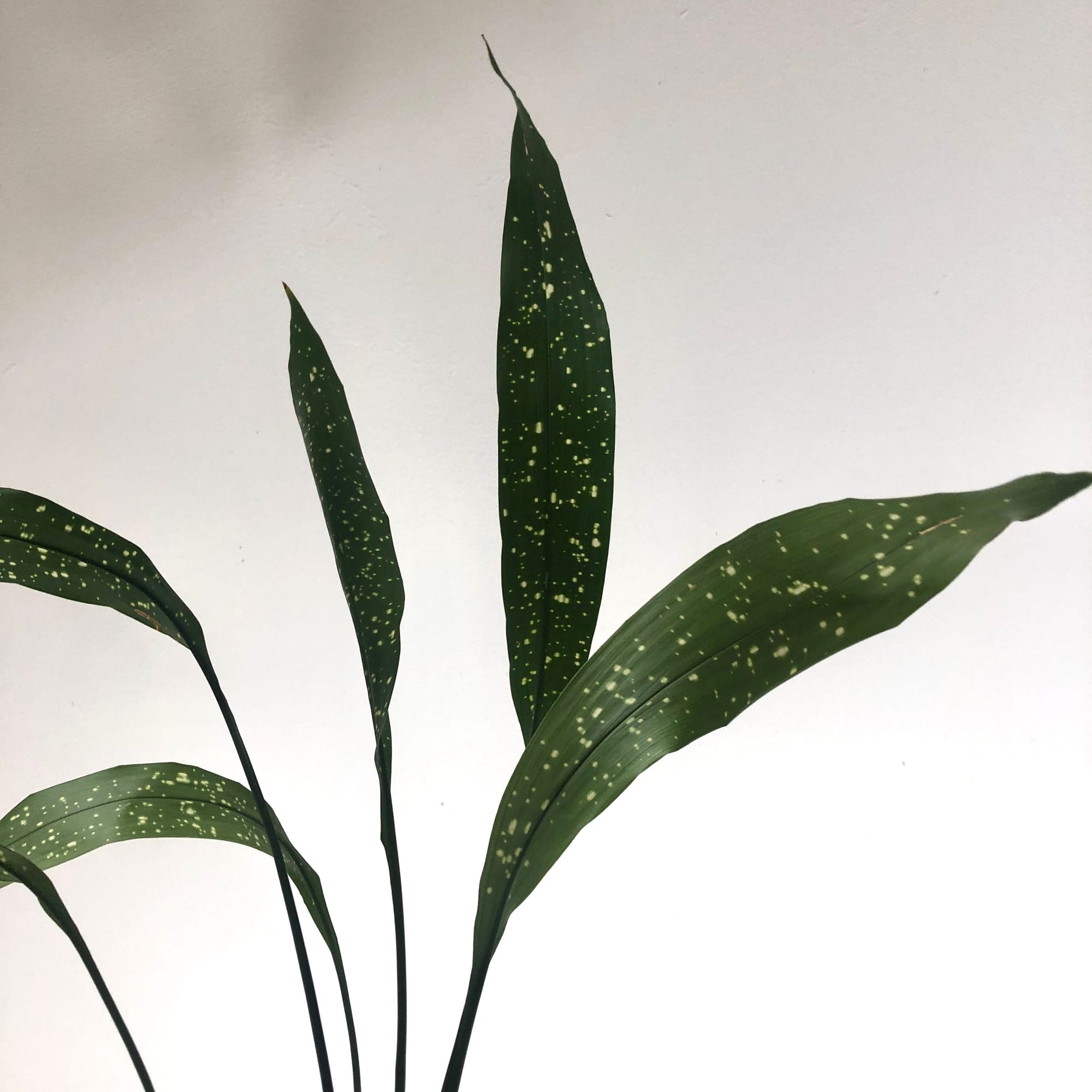
Repotting
Repot every two or three years in the spring, using a 'Houseplant' labelled compost and the next sized pot with adequate drainage. Hydrate the plant 24hrs before tinkering with the roots to prevent the risk of transplant shock. For those that are situated in a darker location, add a thin layer of small grit in the pot's base to improve drainage and downplay over-watering. Click here for a detailed step-by-step guide on transplantation, or via this link to learn about repotting with root rot.
Book a 1-to-1 video call with Joe Bagley if you'd like a personal guide to repotting your houseplant. This will include recommending the right branded-compost and pot size, followed by a live video call whilst you transplant the specimen for step-by-step guidance and answer any further questions!
How to Save Your Aspidistra from Root Rot
1. Check for root rot by removing the plant from the pot to inspect the roots. If the roots are brown and mushy, and the plant feels 'loose' and can be removed from the soil, you must act quickly.
2. Cut the leaf in half width ways to reduce its overall length by half. This will reduce moisture loss in the overall plant, so it can focus on rerooting & growing. Remove the plant from the soil and prune any rotten roots (healthy roots are cream coloured & plump).
3. Place the plant around a quarter deep into a fresh batch of 'Houseplant' potting mix, using a 7cm plastic pot. It's base (rhizome) must be covered by the soil.
4. Water the soil sparingly so that the soil is only a little moist.
5. Place the potted plant into a transparent bag (pot and foliage) and locate it in a warm windowsill.
6. Ensure the soil is slightly moist and check for new growth eventually. The plant should survive with fresh new growth in the roots and foliage after a few months.
Pests & Diseases
Keep an eye out for mealybugs, spider mites, scale, thrips, fungus gnats, vine weevils & root mealybugs that'll locate themselves in the cubbyholes and undersides of the leaves, with the exception of the latter two in the soil. Common diseases associated with Aspidistra are root rot (Sclerotium rolfsii), leaf-spot disease, botrytis, rust, Fusarium wilt, rhizoctonia, powdery mildew & southern blight - click here to learn more about these issues.
Toxicity
Not known to be poisonous by consumption of pets and humans. If high quantities are eaten, it may result in vomiting, nausea and a loss of appetite.
Retail Locations
Most likely to be sold on internet stores with rare appearances at Blue Diamond or Dobbies.
Book a 1-to-1 Call with THE HOUSEPLANT DOCTOR™
If you need further advice with your houseplants, book an advice call with ukhouseplants' friendly and expert writer today! This can be done via a video or audio call on most apps, including Facebook, FaceTime & Skype. A ten-minute call costs £5.99 (US$7), or £15.99 for thirty minutes. You can ask multiple questions, including queries on plants, pests, terrariums, repotting advice and anything in between. Please consider supporting this service to keep ukhouseplants thriving!
